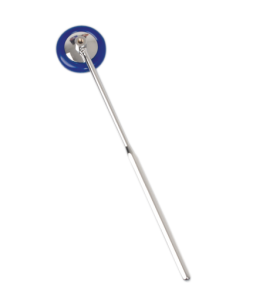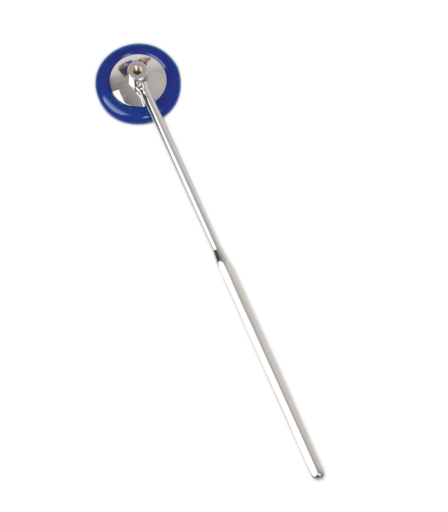Nineteenth-century recommendations for eliciting muscle stretch reflexes included tapping the tendons with fingers, the ulnar surface of the hand, lightweight percussion hammers, the handles of such hammers, or monaural stethoscopes. Some even resorted to using paperweights, the edges of large electrodes, the foot of a laboratory stand, or a table lamp. By the early twentieth century, most were advocating specially constructed reflex hammers, which were heavier than existing chest percussion hammers, and which also had various special features for neurologic examination. Joseph François Félix Babinski (1825–1893), in particular, was an advocate of hammers:1 “One should not [elicit muscle stretch reflexes] with the side of the hand … One would be better served to use a percussion hammer.” Although Babinski is best known for his description of the “toe phenomenon,” a pathologic cutaneous reflex response that he described in 1896 and that now bears his name, he also studied muscle stretch reflexes extensively and wrote a monograph on the subject.1 In his monograph, he described two hammers that he used, one with the head fixed perpendicular to the shaft. This hammer has come to be called a “Babinski hammer,” although it seems that Babinski was more of a popularizer than inventor or developer.
Babinski did not have much advice for those learning to elicit muscle stretch reflexes:
The operator will apply on the tendon … that he intends to stimulate a sharp tap … It is impossible to state precisely the intensity or the degree of quickness with which the blow must be endured … One masters, in some sort of automatic manner, how to correctly strike the tendons … just as one learns in playing billiards to make a “follow-through” or “pulling back.”
Babinski’s monograph, Babinski believed that “many positions are good [for eliciting the knee jerk] and must be tried successively in cases of uncertainty.” These positions included: 1) seated with crossed legs (“This is difficult for stout people”); 2) seated with the knees bent “at an obtuse angle” and the heels on the ground; 3) seated on a table, legs hanging; and 4) supine (“The sick lie on their back”) with the heel on the table and the popliteal fossa supported by the forearm of the examiner.
Buy now most selling healthcare products/ Babinski hammer with telescoping handles online at wholesale price from Nexgen Medical. Order Now!

